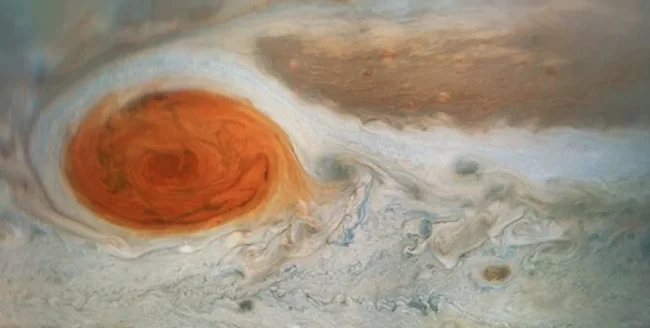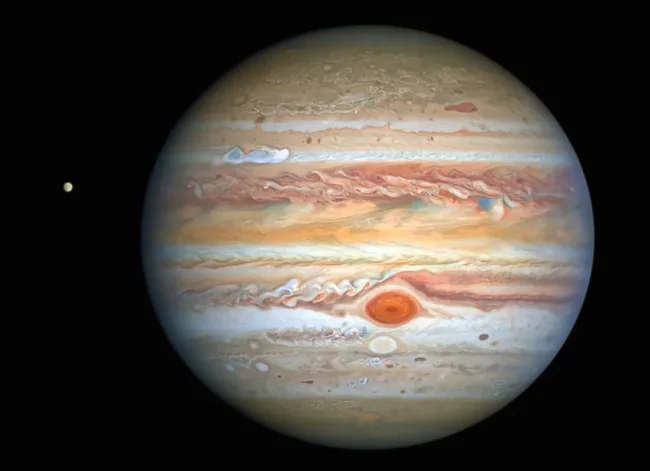Strange movement detected on Jupiter: scientists don’t know what’s going on (3 photos)
Jupiter's signature feature, the Great Red Spot, has been observed by astronomers for decades, but this is an unprecedented event. 
Using the Hubble Space Telescope, astronomers have discovered that the largest atmospheric vortex in the solar system, Jupiter's Great Red Spot, is shrinking and growing in size about every 90 days. Why the massive anticyclonic storm, estimated to be 14,750 km wide (larger than the diameter of Earth), behaves this way remains a mystery. The results of the study were published in The Planetary Science Journal, writes Space.
Astronomers have discovered that Jupiter's main feature, the Great Red Spot, is shrinking and growing in size, while it moves through the atmosphere sometimes faster, sometimes slower. And so far, scientists have not been able to explain this phenomenon. 
Astronomers have been observing the Great Red Spot for almost 90 days and have discovered periodic changes in the size of the atmospheric vortex. Scientists say they did not expect to see changes in its size while moving through the atmosphere.
The Great Red Spot is located 22 degrees south of Jupiter's equator and is constantly affected by powerful jet streams from the north and south, that is, zones of very strong wind. These currents move around the planet at a speed of 428 km/h. Thanks to the jet streams, the anticyclonic storm does not move to other latitudes, although it moves to the west. Such movement, as scientists have discovered, sometimes slows down, sometimes speeds up over the course of about 90 days. Scientists suggest that this may be related to the change in the size of the Great Red Spot. 
Interestingly, when an atmospheric vortex slows down, its width increases, and when it accelerates, its width decreases. Scientists suggest that this may be related to how the Great Red Spot interacts with the surrounding atmosphere.
Now scientists want to use the Webb Space Telescope, which can look deeper into the Great Red Spot, to try to understand what is happening in Jupiter's atmosphere.
Astronomers believe that the atmospheric vortex does have periods of stabilization in size, when it does not change, but new data is needed for this.






















